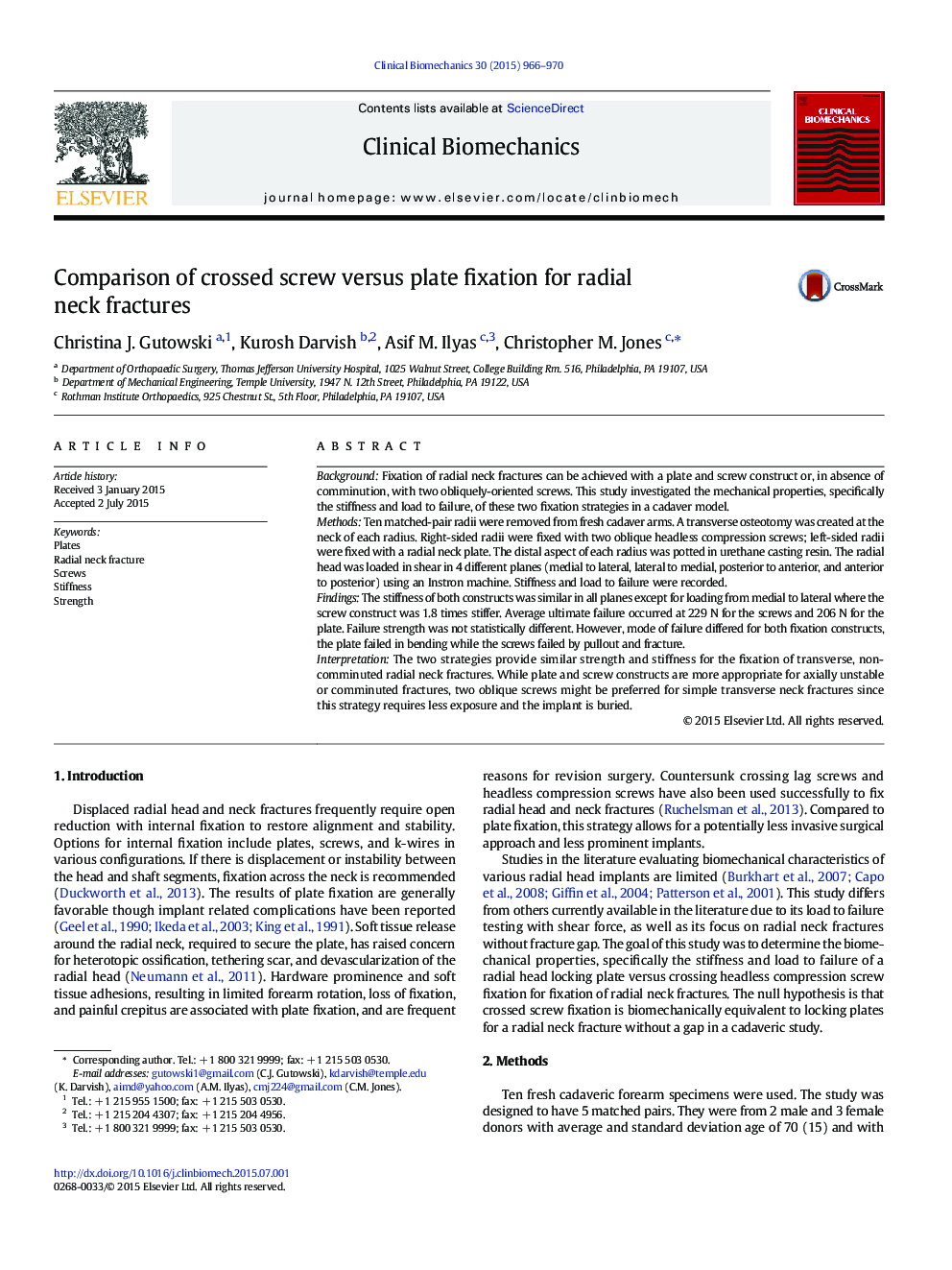| Article ID | Journal | Published Year | Pages | File Type |
|---|---|---|---|---|
| 4050222 | Clinical Biomechanics | 2015 | 5 Pages |
•Fractures of the radial neck can be treated with open reduction internal fixation•Options for fixation include a plate/screw construct and obliquely-oriented screws.•Our analysis revealed similar biomechanical characteristics of these two strategies though failure modes differed•When loaded medially to laterally, the screw construct was 1.8 times stiffer.•Obliquely-oriented screws may be preferred in transverse, noncomminuted fractures
BackgroundFixation of radial neck fractures can be achieved with a plate and screw construct or, in absence of comminution, with two obliquely-oriented screws. This study investigated the mechanical properties, specifically the stiffness and load to failure, of these two fixation strategies in a cadaver model.MethodsTen matched-pair radii were removed from fresh cadaver arms. A transverse osteotomy was created at the neck of each radius. Right-sided radii were fixed with two oblique headless compression screws; left-sided radii were fixed with a radial neck plate. The distal aspect of each radius was potted in urethane casting resin. The radial head was loaded in shear in 4 different planes (medial to lateral, lateral to medial, posterior to anterior, and anterior to posterior) using an Instron machine. Stiffness and load to failure were recorded.FindingsThe stiffness of both constructs was similar in all planes except for loading from medial to lateral where the screw construct was 1.8 times stiffer. Average ultimate failure occurred at 229 N for the screws and 206 N for the plate. Failure strength was not statistically different. However, mode of failure differed for both fixation constructs, the plate failed in bending while the screws failed by pullout and fracture.InterpretationThe two strategies provide similar strength and stiffness for the fixation of transverse, non-comminuted radial neck fractures. While plate and screw constructs are more appropriate for axially unstable or comminuted fractures, two oblique screws might be preferred for simple transverse neck fractures since this strategy requires less exposure and the implant is buried.
